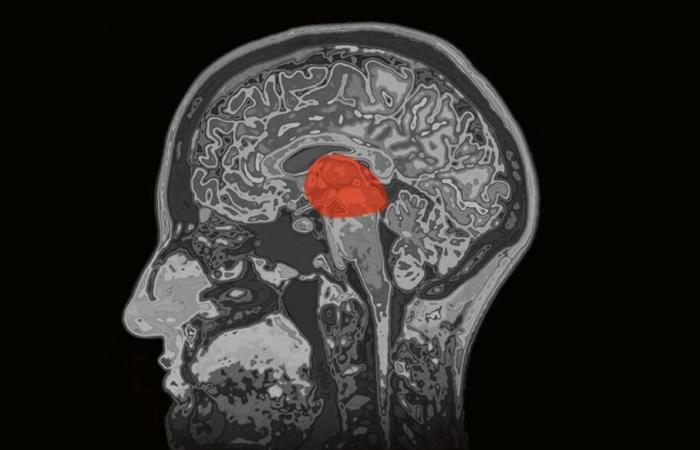At all times, the brain receives and filters an avalanche of sensory information, but only a tiny part emerges to our consciousness. For several decades, research on conscious perception and its neural mechanisms have mainly focused on the role of the cerebral cortex. But other regions buried in the depths of the brain could be just as essential to conscious perception, including thalamus.
This structure is a relay through which almost all the sensory information passes: it could therefore play the role of selector between those who become conscious and the others. Researchers have put forward the hypothesis that some of his subdivisions could play a role in the formation of conscious perceptions by modulating the activity of the cerebral cortex. However, the technical means available to researchers limited the obtaining of empirical evidence to support this hypothesis. Indeed, access, in humans, to the fine activity of the profound regions of the brain (subcortical) is particularly difficult and requires heavy brain surgeries. But a study published in the journal Science By the neuroscientist Zepeng Fang, of the University of Normal of Beijing, and his colleagues made it possible to overcome this technical barrier.
To solve the problem of inaccessibility of thalamus, the researchers called on five patients with headache resistant to treatment, and in whom electrodes had been located in the prefrontal cortex and thalamus during a prior intervention intended to treat their headache. An operation which offers an entry door to the depths of the brain to simultaneously record the electrical activity of the two structures.
Thalamocortical waves
During the test, participants were invited to fix the center of a screen, while scratches appeared gradually in their field of vision. They then had to indicate, thanks to an eye movement, if they had seen the scratches, designed to be perceived consciously (by differences in contrast) about half of the time and remain subliminal during the other half.
-The development of this ingenious protocol was not in vain: it made it possible to highlight that specific regions of the thalamus not responsible for the relay of sensory information are involved in the emergence of a conscious perception. Indeed, when participants were aware of the appearance of scratches, certain parts of their thalamus were the seat of an earlier and intense activity than the prefrontal cortex. In addition, the conscious perception seemed to emerge when the frontal lobe and these regions dialogue: the awareness of the scratches in the visual field of the participants was associated with a synchronization of the oscillations between the prefrontal cortex and the thalamic subparts in question. A skilful experience that suggests that precise thalamus subdivisions would play the role of “conscience goalkeepers”, filtering the information that will cross the threshold of conscious perception …
Download the PDF version of this article
(reserved for digital subscribers)








